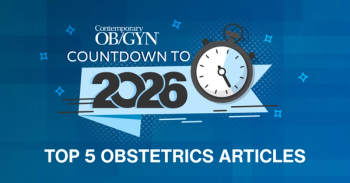
Estrogen therapy linked to improved heart health
A new study suggests long-term use of estrogen-based hormone therapy may offer cardiovascular benefits for postmenopausal women.
Estrogen-based hormone therapy may benefit heart health
Heart health may be improved through long-term use of estrogen-based hormone therapies, according to a recent study published in Obstetrics and Gynecology.1
Significant debate remains about whether to start hormone therapy during the menopause transition, including a lack of understanding about the long-term impact of hormone therapy on heart health. However, the study found improved biomarkers linked to heart health among menopausal women taking hormone therapy.1
“The pendulum has been swinging back and forth as to whether hormone therapy is safe for menopausal women, especially from a cardiovascular disease perspective,” said Matthew Nudy, MD, assistant professor of medicine at the Penn State College of Medicine.1 “More recently, we’re recognizing that hormone therapy is safe in younger menopausal women within 10 years of menopause onset.”
Determining cardiovascular risk
Participants included postmenopausal women aged 50 to 79 years.2 Fasting blood samples were collected from these patients at baseline and year 1, with a random subset selected to have an additional blood draw at year 3.
Relevant parameters included glucose concentrations, insulin, micronutrients, apolipoprotein lipids, and clotting factors at years 1, 3, and 6. Blood samples were stored at −80°C in a central biorepository.2
Low-density lipoprotein cholesterol (LDL-C) was reported as the primary outcome. Total cholesterol, high-density lipoprotein cholesterol, triglycerides, lipoprotein(a), glucose, insulin, and homeostatic model assessment for insulin resistance were reported as secondary outcomes.2
Treatment groups and variations
Participants were grouped as taking conjugated equine estrogens (CEE) alone or CEE plus medroxyprogesterone acetate (MPA). Covariates included race, ethnicity, and age.2
An increased prevalence of non-Hispanic White patients was reported in the CEE+MPA group, while the CEE alone group had higher rates of diabetes, hypertension, and hyperlipidemia. A median 3 years of follow-up was performed in CEE+MPA patients vs 6 years for CEE alone patients.2
LDL-C reductions observed in both groups
LDL-C was reduced by 11% within 1 year after randomization among CEE alone patients vs placebo. This indicated a geometric means ratio of 0.89. Additionally, geometric means ratios of 0.89 and 0.93 were reported at 3 and 6 years, respectively, highlighting this effects’ persistence.2
The CEE+MPA group reported a similar reduction compared to placebo, with a geometric means ratio of 0.88. However, this difference decreased over the follow-up period. By year 6, the geometric means ratio increased to 0.95. Notably, study pill adherence declined during this period, while statin use increased.2
Other cardiovascular biomarker improvements
All cardiovascular disease (CVD) biomarkers except for triglycerides were benefitted by CEE alone and by CEE+MPA. Increases of 13% and 7% were reported for HDL-C in patients taking CEE alone and CEE+MPA, respectively, compared with placebo.2
Trends were similar across racial and ethnic groups, though American Indian and Asian women reported more significant reductions in lipoprotein(a) from CEE alone. Similar differences were reported in patients taking CEE+MPA.2
Conclusion
These results indicated improved long-term cardiovascular effects from CEE alone and CEE+MPA. Investigators concluded this data may be helpful for younger menopausal women deciding whether to take oral hormone therapy.2
“Currently, hormone therapy is not FDA-approved to reduce the risk of coronary artery disease or stroke,” said Nudy.1
- Can hormone therapy improve heart health in menopausal women? Penn State. April 22, 2025. Accessed May 2, 2025.
https://www.eurekalert.org/news-releases/1081298 . - Nudy M, Aragaki A, Jiang X, et al. Long-term changes to cardiovascular biomarkers after hormone therapy in the Women's Health Initiative hormone therapy clinical trials. Obstetrics & Gynecology 2025;145(4):357-367. doi:10.1097/AOG.0000000000005862
Newsletter
Get the latest clinical updates, case studies, and expert commentary in obstetric and gynecologic care. Sign up now to stay informed.











